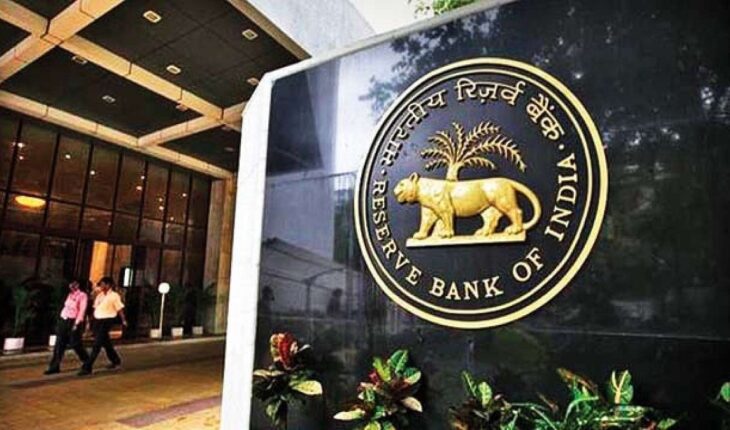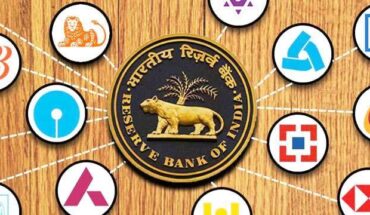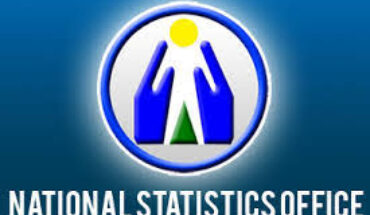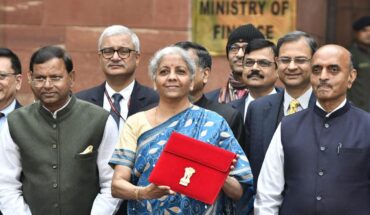Puja Mehra on why the apex bank must apprise the Centre of why it failed to control inflation
Popular narrative suggests that the Central government led by Prime Minister Narendra Modi has a low tolerance for inflation. But this may not be accurate. In each of the last three quarters, average inflation has has persisted above the upper tolerance limit set by the Centre. Inflation, as measured by the consumer price index (CPI), was 6.7 per cent in the January-March quarter, 6.6 per cent in the April-June quarter (based on imputed data) and 6.9per cent in the July-September quarter. At 5.8 per cent, the average inflation rate for the October-December 2019 quarter was also within a hair’s breadth of the upper tolerance limit.
The inflation target, notified in August 2016, is 4per cent. The upper tolerance level was set at 6per cent and the lower tolerance level at 2per cent. Average inflation overshooting the upper tolerance level or remaining below the lower tolerance level for any three consecutive quarters constitutes a failure to achieve the inflation target. In such an event, the Reserve Bank of India (RBI) is required to send a report to the Centre, stating the reasons for the failure to achieve the inflation target, the remedial actions it proposes to initiate, and an estimate of the time-period within which it expects to achieve the inflation target through the corrective steps proposed. Through amendments passed by Parliament in 2016, these new provisions were written into the RBI Act. They are aimed at ensuring enhanced transparency and accountability of the central bank and are a key feature of the inflation-targeting regime agreed upon between the RBI and Finance Ministry.
For a while now, a determined lobby, with elements both within and outside government, has been injecting confusion into the discourse on the desirability of persisting with the inflation-targeting regime. This is probably because high inflation makes all that is measured in nominal terms appear rosier — like business revenues and profits, or tax collection figures in the Finance Ministry’s budget arithmetic.
The minutes of the Monetary Policy Committee (MPC) meeting after its August policy review suggest that the RBI’s defence for the breach of the 4per cent inflation target and 6per cent upper tolerance limit was the handicap of data limitations. The normal data collection exercise of the National Statistics Office was disrupted during the lockdown imposed due to the COVID-19 pandemic. The publication of the CPI had to be suspended for the months of April and May. The CPI for these two months was imputed using proxies for several of the index’s components, as field visits for collecting the requisite price data were put off, leading the MPC to conclude that the improvised prints ought to be regarded as a break in the CPI series for the purpose of monetary policy decisions.
However, the break that the MPC referred to is not visible in the inflation data. The data for the last four quarters — 5.8per cent, 6.7per cent, 6.6per cent, 6.9per cent — appears continuous. The average inflation for the April-June quarter, at 6.6per cent, looks reasonable, despite the imputations, probably because, as the RBI’s October Monetary Policy Report notes, once the COVID-19-related restrictions were lifted and non-essential activities partially restored, data collection resumed, allowing for the provisional index for June to be compiled. Prices could be collected from 1,030 urban markets and 998 villages, that accounted for 88per cent of the total sample. Even so, the justification of data complications, which is a rather weak one, it has been reported, is likely to be made the basis for exempting the RBI from complying with the requirement of writing to the Finance Ministry, explaining why inflation missed both the target and the upper tolerance limit. This is inexcusable.
The range around the inflation target that the Ministry provided to the RBI is for accommodating constraints and challenges like data limitations. The press statement that the Finance Ministry had issued at the time of setting the target makes this quite clear. The whole point of the range around the target, the statement emphasised, is that it “accommodates data limitations, projection errors, short-run supply gaps and fluctuations in the agriculture production”. The last factor is an important one for CPI inflation, as food articles constitute about 46per cent of the CPI basket.
The range, according to the Ministry’s statement, allows for unanticipated short-term shocks to be accommodated, even while nudging public inflation expectations to the target at the centre of the range, to which the monetary policy ought to return the economy over the medium term.
It is hard to imagine what could be gained by letting the RBI side-step the institutional mechanism provided under the RBI Act for explaining the challenges it is up against in meeting the inflation target and what needs to be done to manage them. Why should the RBI not be made to explain what it plans to do to control inflation? The central bank should be allowed to state expressly what support by way of government policy it needs to meet the inflation target. This can only strengthen the RBI’s hand; it should not let go of the opportunity to reinforce the MPC framework. Transparency can enable more informed decision-making within the government, greater public scrutiny of the RBI’s performance, and an improved inflation-targeting regime. To slack off on it would be to compromise with the credibility, transparency and predictability of monetary policy.
Puja Mehra is a Delhi-based journalist and author of The Lost Decade. Views expressed are her own
The inflation target, notified in August 2016, is 4per cent. The upper tolerance level was set at 6per cent and the lower tolerance level at 2per cent. Average inflation overshooting the upper tolerance level or remaining below the lower tolerance level for any three consecutive quarters constitutes a failure to achieve the inflation target. In such an event, the Reserve Bank of India (RBI) is required to send a report to the Centre, stating the reasons for the failure to achieve the inflation target, the remedial actions it proposes to initiate, and an estimate of the time-period within which it expects to achieve the inflation target through the corrective steps proposed. Through amendments passed by Parliament in 2016, these new provisions were written into the RBI Act. They are aimed at ensuring enhanced transparency and accountability of the central bank and are a key feature of the inflation-targeting regime agreed upon between the RBI and Finance Ministry.
For a while now, a determined lobby, with elements both within and outside government, has been injecting confusion into the discourse on the desirability of persisting with the inflation-targeting regime. This is probably because high inflation makes all that is measured in nominal terms appear rosier — like business revenues and profits, or tax collection figures in the Finance Ministry’s budget arithmetic.
The minutes of the Monetary Policy Committee (MPC) meeting after its August policy review suggest that the RBI’s defence for the breach of the 4per cent inflation target and 6per cent upper tolerance limit was the handicap of data limitations. The normal data collection exercise of the National Statistics Office was disrupted during the lockdown imposed due to the COVID-19 pandemic. The publication of the CPI had to be suspended for the months of April and May. The CPI for these two months was imputed using proxies for several of the index’s components, as field visits for collecting the requisite price data were put off, leading the MPC to conclude that the improvised prints ought to be regarded as a break in the CPI series for the purpose of monetary policy decisions.
However, the break that the MPC referred to is not visible in the inflation data. The data for the last four quarters — 5.8per cent, 6.7per cent, 6.6per cent, 6.9per cent — appears continuous. The average inflation for the April-June quarter, at 6.6per cent, looks reasonable, despite the imputations, probably because, as the RBI’s October Monetary Policy Report notes, once the COVID-19-related restrictions were lifted and non-essential activities partially restored, data collection resumed, allowing for the provisional index for June to be compiled. Prices could be collected from 1,030 urban markets and 998 villages, that accounted for 88per cent of the total sample. Even so, the justification of data complications, which is a rather weak one, it has been reported, is likely to be made the basis for exempting the RBI from complying with the requirement of writing to the Finance Ministry, explaining why inflation missed both the target and the upper tolerance limit. This is inexcusable.
The range around the inflation target that the Ministry provided to the RBI is for accommodating constraints and challenges like data limitations. The press statement that the Finance Ministry had issued at the time of setting the target makes this quite clear. The whole point of the range around the target, the statement emphasised, is that it “accommodates data limitations, projection errors, short-run supply gaps and fluctuations in the agriculture production”. The last factor is an important one for CPI inflation, as food articles constitute about 46per cent of the CPI basket.
The range, according to the Ministry’s statement, allows for unanticipated short-term shocks to be accommodated, even while nudging public inflation expectations to the target at the centre of the range, to which the monetary policy ought to return the economy over the medium term.
It is hard to imagine what could be gained by letting the RBI side-step the institutional mechanism provided under the RBI Act for explaining the challenges it is up against in meeting the inflation target and what needs to be done to manage them. Why should the RBI not be made to explain what it plans to do to control inflation? The central bank should be allowed to state expressly what support by way of government policy it needs to meet the inflation target. This can only strengthen the RBI’s hand; it should not let go of the opportunity to reinforce the MPC framework. Transparency can enable more informed decision-making within the government, greater public scrutiny of the RBI’s performance, and an improved inflation-targeting regime. To slack off on it would be to compromise with the credibility, transparency and predictability of monetary policy.
Puja Mehra is a Delhi-based journalist and author of The Lost Decade. Views expressed are her own
Attachments area






